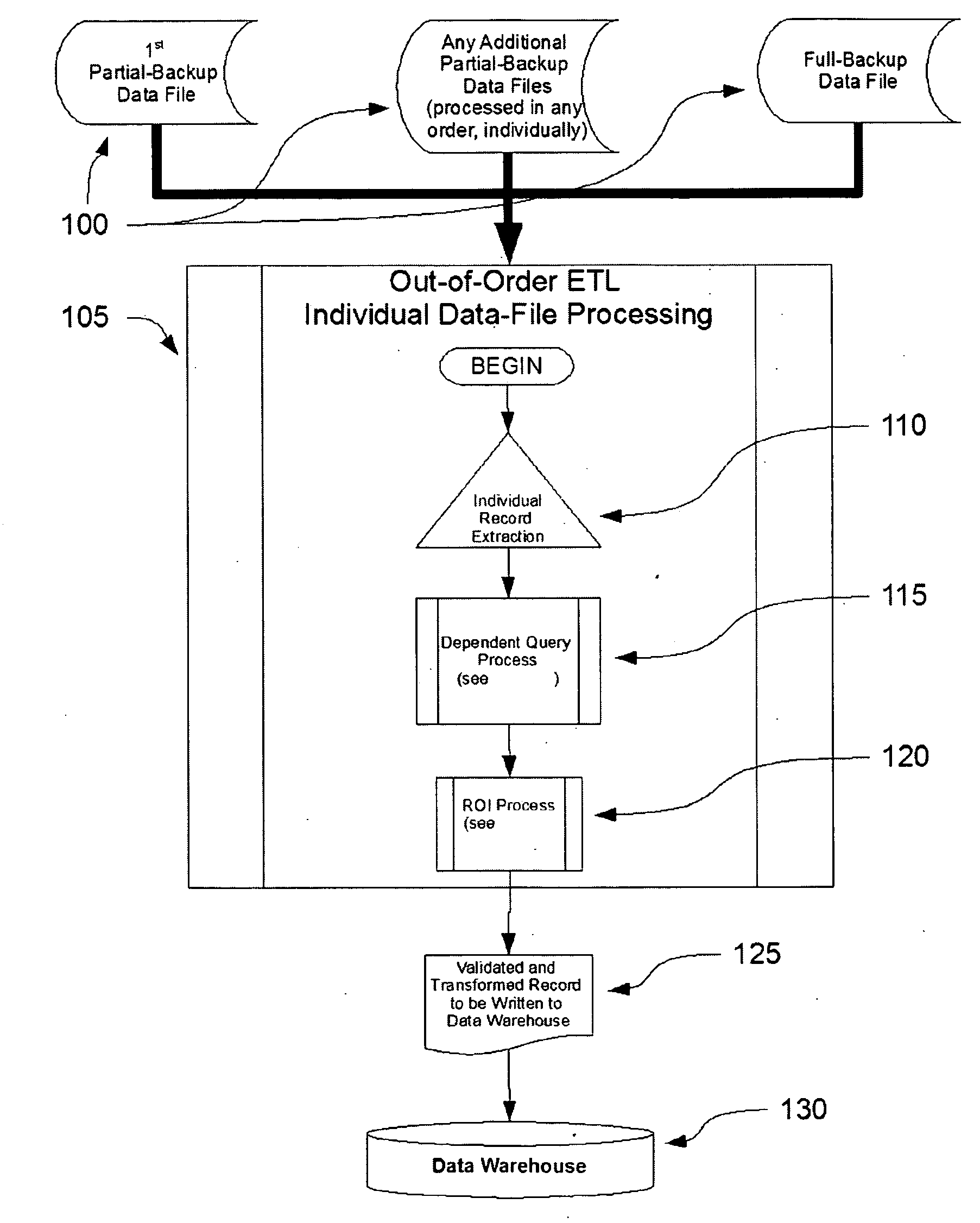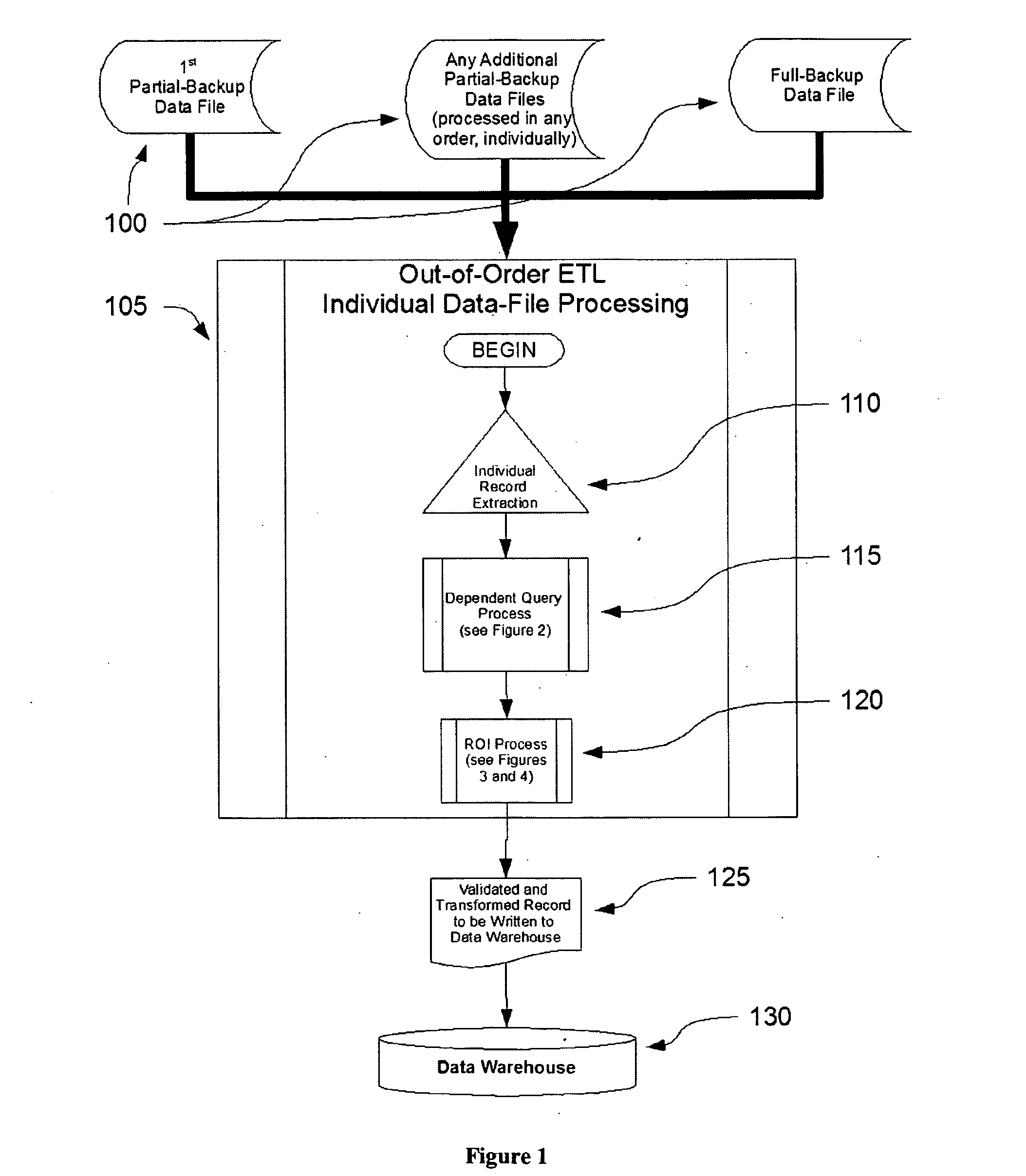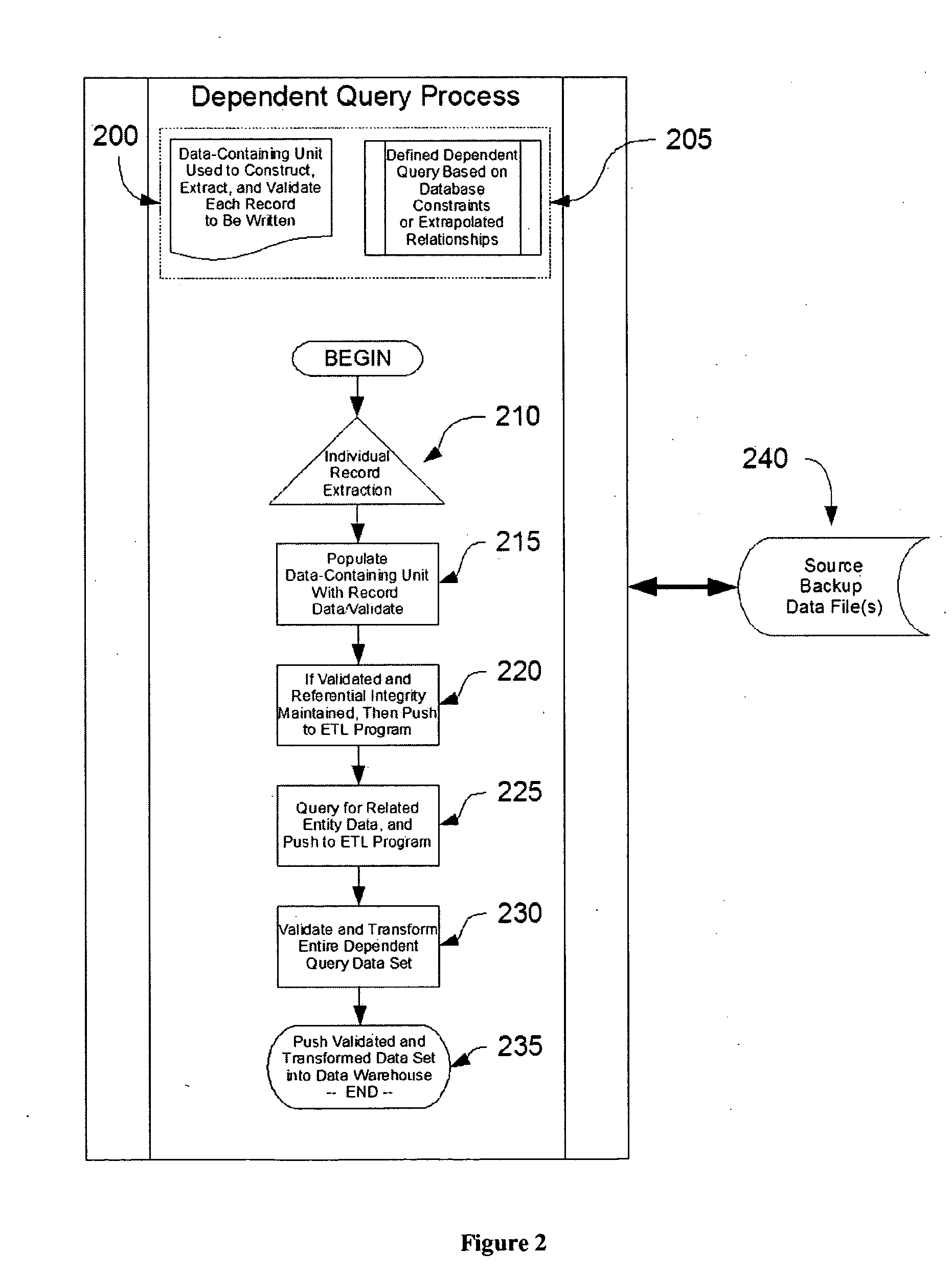Method and Apparatus for Loading Data Files into a Data-Warehouse System
a datawarehouse and data file technology, applied in the direction of electric digital data processing, instruments, computing, etc., can solve the problems of inability to start refreshes until the update is finished, update loss, and efficiency problems, and achieve the effect of ensuring the reference integrity of all data pushed into the etl program and enhancing reliability
- Summary
- Abstract
- Description
- Claims
- Application Information
AI Technical Summary
Benefits of technology
Problems solved by technology
Method used
Image
Examples
first embodiment
l ETL
Overview
[0025]Out-of-order-fill ETL breaks from the traditional approach of loading the oldest full-backup data file into a data warehouse first, followed by subsequent loads of partial-backup data files based on their chronological order, where the data warehouse is not usable until all data has been properly validated and loaded. Refer to FIG. 1. Out-of-order-fill ETL allows a data warehouse (130) to accept the loading of any backup data files (100) in any order, and does not require the loading of all previous backup data files in order to provide some functionality to end users under the view that some functionality or data access is better than none at all. This is especially true for critical systems such as law-enforcement databases in which even a partial dataset may help solve a crime.
[0026]In a preferred embodiment, out-of-order-fill ETL (105) incorporates dependent queries (125) and / or relative-ordering index (ROI) (130), both of which are discussed in detail below. ...
second embodiment
ng Out-of-Order-Fill ETL Principles to Live Data Sources
[0044]While the first embodiment focuses on the application of the principles described above to the restoration of backup data sources, it should be appreciated by one ordinarily skilled in the art that these same concepts can be applied to the creation of usable databases by extraction and / or derivation of data from live (i.e., in-use) data sources. The only difference is that the source data is not necessarily coming from one or more backup data files. Rather, a user may be motivated to create a new data warehouse, or enhance an existing data warehouse, by extracting data from one or more live data sources.
[0045]In this case, the dependent query and ROI concepts described in the first embodiment become especially important, particularly if the source data being extracted comes from multiple and disparate data sources. It does not matter what order the various data sources are mined for extracted data and made available for u...
third embodiment
f-Order-Fill ETL
[0048]This embodiment (refer to FIGS. 1 through 4) encompasses a method for populating a data-warehouse to be employed in a data-warehouse system wherein there is to be data loaded or restored for use, with the data-warehouse system having at least one computing device communicatively coupled with a large dataset, said large dataset having at least one storage device, said at least one storage device containing a full-backup data file and at least one partial-backup data file, said data files containing real-world entity data, and said computing device having a Extraction Load Program (ETL) program to subject the data intended to be loaded to a transform stage according to data-warehouse-specific rules, a method of loading data into a data-warehouse system. The method comprises the step of loading a first partial-backup data file (100), wherein the loading of said first partial-backup data file makes the data in said first partial-backup data file available for use, ...
PUM
 Login to View More
Login to View More Abstract
Description
Claims
Application Information
 Login to View More
Login to View More - R&D
- Intellectual Property
- Life Sciences
- Materials
- Tech Scout
- Unparalleled Data Quality
- Higher Quality Content
- 60% Fewer Hallucinations
Browse by: Latest US Patents, China's latest patents, Technical Efficacy Thesaurus, Application Domain, Technology Topic, Popular Technical Reports.
© 2025 PatSnap. All rights reserved.Legal|Privacy policy|Modern Slavery Act Transparency Statement|Sitemap|About US| Contact US: help@patsnap.com



